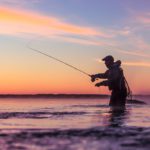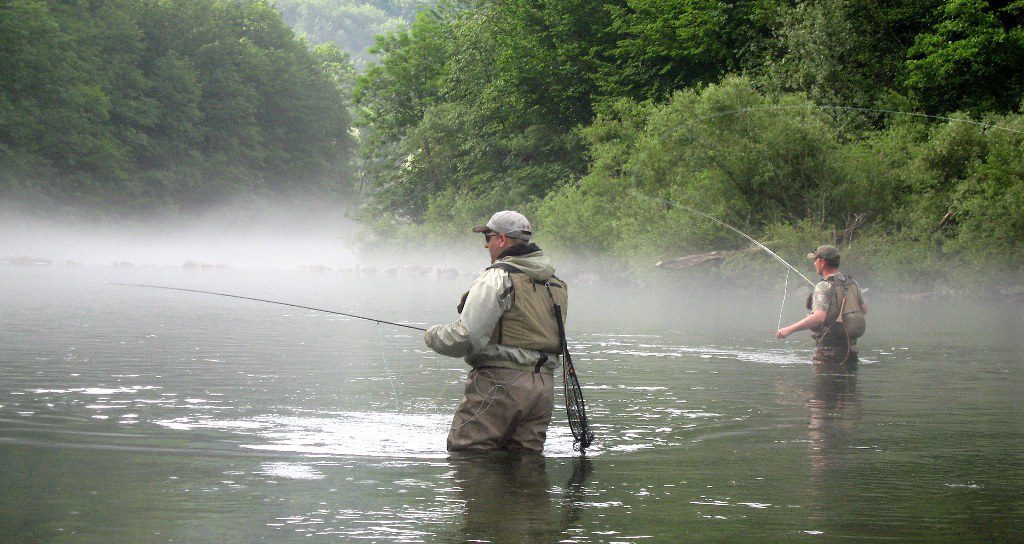 Walleye, bass, catfish and trout are the hungry fish of springtime in the northern hemisphere.
Walleye, bass, catfish and trout are the hungry fish of springtime in the northern hemisphere.
During the winter, fish find the deepest pools, slow their metabolism, reduce their heart rate and minimize their need for food and oxygen. When winter’s snow, ice and cold temperatures abate, freshwater stream fish, like trout, walleye, bass and catfish, emerge as eager to eat as anglers are to catch them.
Jake Wells, the U.S. Domestic Program Director for Yellow Dog Flyfishing, a Global Rescue Safe Travel Partner offering angling experiences worldwide, including in the United States, said, “Springtime is one of the most overlooked and underrated times to fish for a few different reasons. For starters, fewer anglers out on the water and freshwater stream fish have yet to see a lot of angling pressure.”
Brian Hodges of Double Haul Travel, another Global Rescue Safe Travel Partner hosting fishing trips worldwide, enjoys early spring fishing. “In early spring, the water is slower before warmer temperatures make the snow melt rapidly and cause high, muddy water, which is an unfishable condition,” he said. “Some years, April and May are incredible fishing months because you get to the water before the flows increase.”
Timing Your Catches With Insect Hatches
The art of deception is essential when it comes to catching fish. It’s all about the fly, a ruse designed to imitate the appearance, motion, and light reflection of the things that fish eat. Dry flies – the bait resembling an actual insect that rests on the water’s surface – or wet flies – bait that mimics underwater insects – are imposters. This is why understanding what insects are hatching and when is fundamental to fly fishing.
One of the best ways to improve your chances of catching fish in the early weeks of spring is to “nymph,” or use a wet fly that’s designed to look like the pre-adult stage sub-aquatic insects that comprise a large part of a fish’s diet in the very early season.
“The fish are hungry right now in early April and will be eating a variety of insects in their nymph stage beneath the surface,” Hodges said, speaking specifically about the trout native to his home in Montana. “Few insects are flying yet, so we need to fish where fishes’ current food source is, underwater.”
Typically, it’s not until early May when warm, overcast days bring the first flying insect hatches to the water’s surface and shift anglers’ bait of choice from wet to dry flies.
Spring Fishing? Hit the Snooze Button
Fish when the fish are biting, right? In the spring, that’s the afternoon, so you don’t have to set that alarm clock. Taking time to get out the door will probably improve your chances of catching fish.
“You can expect to see better fishing from around 12 -2 p.m. as water temperatures encroach on the magic 50°F mark, when fish become more active,” Hodges said. Wells agrees that there’s no rush. “You can sleep in, have a leisurely morning, and then head out around lunchtime without missing anything.”
In the western U.S., near record-breaking snowpack in some places could mean that high water conditions persist well into the season, which, on paper, doesn’t bode well for ideal spring fishing conditions. However, a lower-than-average snowpack on the east coast could result in better waters into the meat of the spring fishing season, when insects are starting to hatch.
But if you’ve got your heart set on that classic western fly fishing experience, all is not lost. You may have to wait a couple more months. “The majority of river drainages throughout the Greater Yellowstone area are above their snow water equivalent percent of normal,” Wells said. “This is great news for the upcoming summer season.”
Safety Tip: Pack for Remote, Even If You Are Local
Fishing isn’t as high risk as some sports. “We do not see many fishing injuries,” said Jeffrey Weinstein, medical operations supervisor at Global Rescue. “I would say the most frequent are hook-related or falls.”
With training and experience in austere medicine and wilderness rescue, Weinstein likes to be prepared for all possible situations.
“People may be on prolonged fishing expeditions, possibly at sea or in remote areas,” he said. “Minor injuries can become big issues if left uncared for while trying to get out of a remote area.” Weinstein recommends vacuum sealing a basic wound cleaning module, a personal protective equipment pack, a splinting and hemorrhage control bundle, and a medications packet.
Whether you’re fishing near home or abroad in a remote location, savvy anglers will carry a complete fishing first aid kit before their first cast.
Written by: Justin Walker
BIO:
Justin Walker is Global Rescue’s Fishing Manager and has fished worldwide.


















